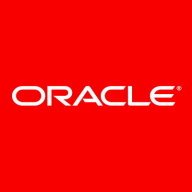

Oracle Autonomous Data Warehouse and Dremio are competing products within the data warehousing and analytics space. Oracle Autonomous Data Warehouse has an advantage in ease of integration with Oracle's ecosystem, while Dremio offers flexibility with various data sources.
Features: Oracle Autonomous Data Warehouse includes automation in scaling and backup operations, integrated machine learning, and strong security features. It simplifies usage for those within the Oracle ecosystem. Dremio offers a Data-as-a-Service model allowing real-time analytics without moving data, advanced data virtualization, and reflection capabilities which benefit diverse data environments.
Room for Improvement: Oracle Autonomous Data Warehouse could enhance features for non-Oracle ecosystems, improve flexibility with various data sources, and offer more competitive pricing. Dremio may require enhanced integration simplicity, better initial setup guidance, and more robust native analytics capabilities.
Ease of Deployment and Customer Service: Oracle Autonomous Data Warehouse provides straightforward deployment for existing Oracle users with reliable customer service. Dremio supports flexible deployment across environments but might require more expertise and customization efforts, although it has strong support structures.
Pricing and ROI: Oracle Autonomous Data Warehouse typically involves higher upfront costs but promises ROI through optimizations within Oracle's ecosystem. Dremio offers a more cost-effective initial setup, with flexibility and integration value, presenting better pricing and value for those prioritizing flexible, scalable data access.
| Product | Market Share (%) |
|---|---|
| Dremio | 8.9% |
| Oracle Autonomous Data Warehouse | 5.2% |
| Other | 85.9% |


| Company Size | Count |
|---|---|
| Small Business | 1 |
| Midsize Enterprise | 3 |
| Large Enterprise | 4 |
| Company Size | Count |
|---|---|
| Small Business | 7 |
| Midsize Enterprise | 1 |
| Large Enterprise | 11 |
Dremio is a data analytics platform designed to simplify and expedite the data analysis process by enabling direct querying across multiple data sources without the need for data replication. This solution stands out due to its approach to data lake transformation, offering tools that allow users to access and query data stored in various formats and locations as if it were all in a single relational database.
At its core, Dremio facilitates a more streamlined data management experience. It integrates easily with existing data lakes, allowing organizations to continue using their storage of choice, such as AWS S3, Microsoft ADLS, or Hadoop, without data migration. Dremio supports SQL queries, which means it seamlessly integrates with familiar BI tools and data science frameworks, enhancing user accessibility and reducing the learning curve typically associated with adopting new data technologies.
What Are Dremio's Key Features?
What Benefits Should Users Expect?
When evaluating Dremio, potential users should look for feedback on its query performance, especially in environments with large and complex data sets. Reviews might highlight the efficiency gains from using Dremio’s data reflections and its ability to integrate with existing BI tools without significant changes to underlying data structures. Also, check how other users evaluate its ease of deployment and scalability, particularly in hybrid and cloud environments.
How is Dremio Implemented Across Different Industries?
Dremio is widely applicable across various industries, including finance, healthcare, and retail, where organizations benefit from rapid, on-demand access to large volumes of data spread across disparate systems. For instance, in healthcare, Dremio can be used to analyze patient outcomes across different data repositories, improving treatment strategies and operational efficiencies.
What About Dremio’s Pricing, Licensing, and Support?
Dremio offers a flexible pricing model that caters to different sizes and types of businesses, including a free community version for smaller teams and proof-of-concept projects. Their enterprise version is subscription-based, with pricing varying based on the deployment scale and support needs. Customer support is comprehensive, featuring dedicated assistance, online resources, and community support.
Oracle Autonomous Data Warehouse is the world’s first and only autonomous database optimized for analytic workloads, including data marts, data warehouses, data lakes, and data lakehouses. With Autonomous Data Warehouse, data scientists, business analysts, and nonexperts can rapidly, easily, and cost-effectively discover business insights using data of any size and type. Built for the cloud and optimized using Oracle Exadata, Autonomous Data Warehouse benefits from faster performance and, according to an IDC report (PDF), lowers operational costs by an average of 63%.
Autonomous Database provides the foundation for a data lakehouse—a modern, open architecture that enables you to store, analyze, and understand all your data. The data lakehouse combines the power and richness of data warehouses with the breadth, flexibility, and low cost of popular open source data lake technologies. Access your data lakehouse through Autonomous Database using the world's most powerful and open SQL processing engine.
We monitor all Cloud Data Warehouse reviews to prevent fraudulent reviews and keep review quality high. We do not post reviews by company employees or direct competitors. We validate each review for authenticity via cross-reference with LinkedIn, and personal follow-up with the reviewer when necessary.